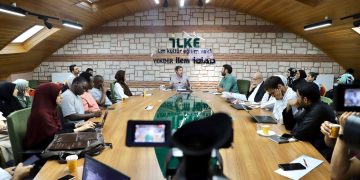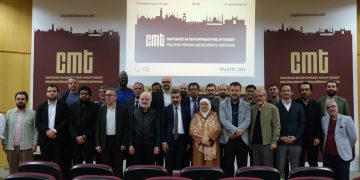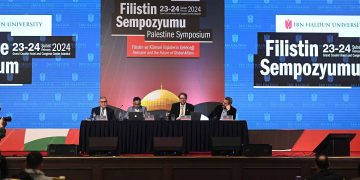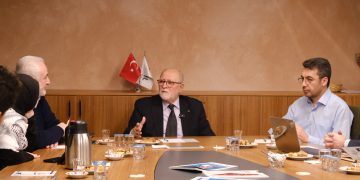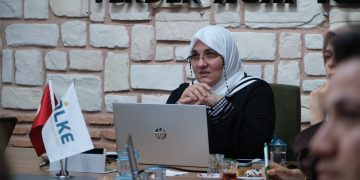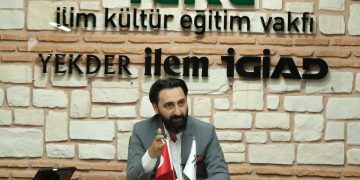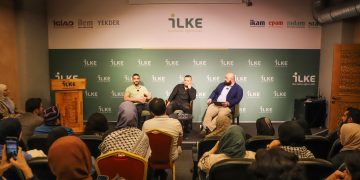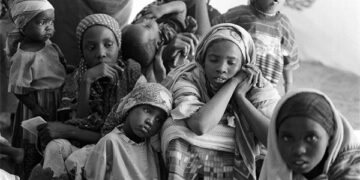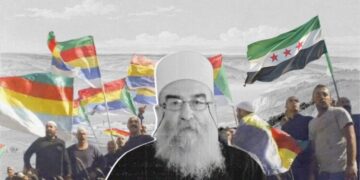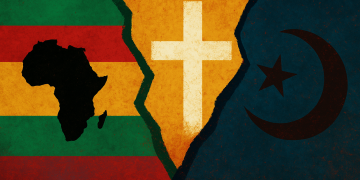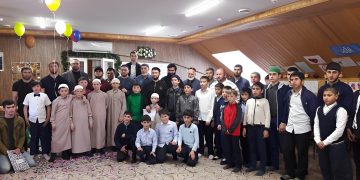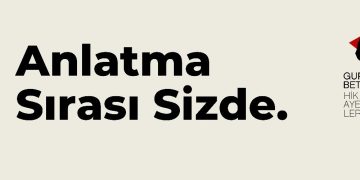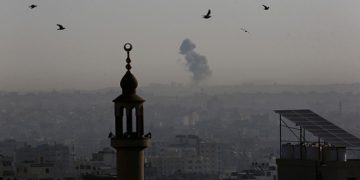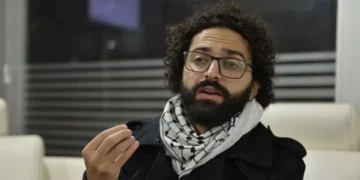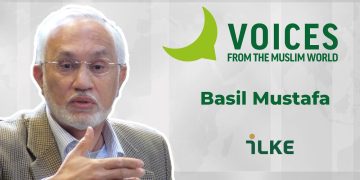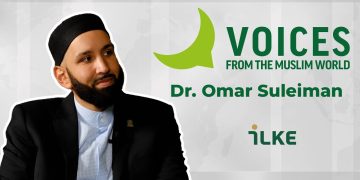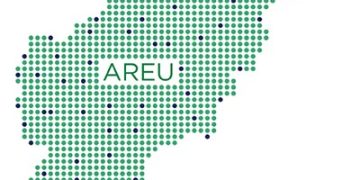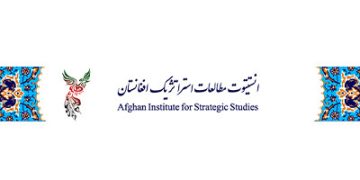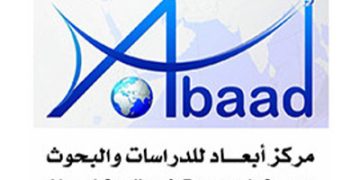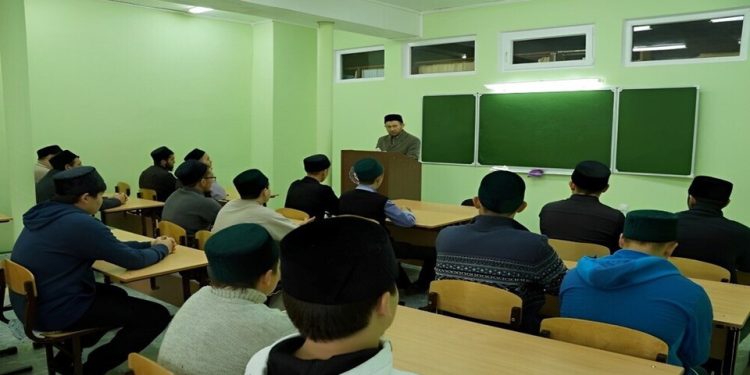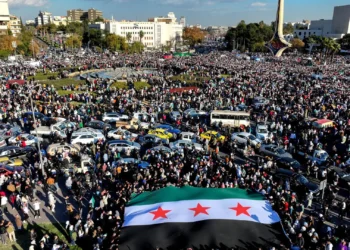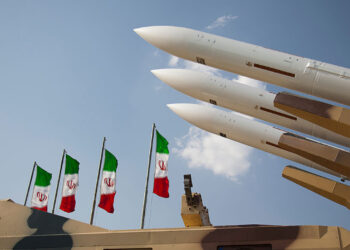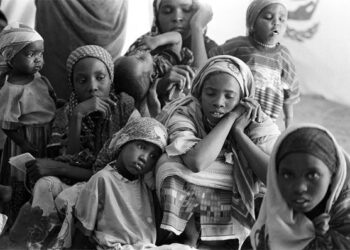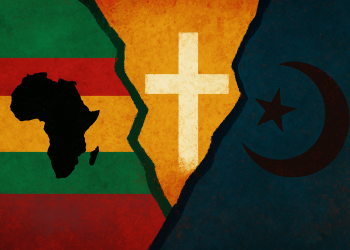Central Asia is an important region of the Eurasian continent, neighbouring Asia to the east and Europe to the west. Rich in underground minerals, the region has historically occupied an influential geopolitical and strategic position where the interests of various powers have converged and intertwined. In this work, the current situation in the field of education and training in Kazakhstan, Kyrgyzstan, and Uzbekistan, especially the general situation regarding the religion of Islam in public schools within the system of secularism will be discussed. Religious education in religious institutions such as madrasahs and mosques has been researched many times so far. For example, in the 3-volume book titled Islam in Central Asia – From Representation to Phobia, edited by Muhammet Savaş Kafkasyalı, this issue has been analysed in a comprehensive way. Therefore, in order not to fall into repetition, the main purpose of our study is to give information about the status of Islamic education in public schools in terms of its new and current problems.
There is a common approach to religious education in Central Asia, but this approach is based on more specific policies in each country. In general, Central Asian governments are cautious about Islamic education as they fear the uncontrolled expansion of Islam, as the experience of some other Muslim states shows such as Afghanistan. Therefore, they approach religious education through a security discourse. According to the authorities in the region, the newly independent countries are faced with several religious challenges and need to organise religious education under state control in order to counter fundamentalist groups that seek to fill any moral or political vacuum. However, the secular system in the countries cannot fully control religious education. This is because all three countries grant the right to freedom of religion as per their constitutions that were adopted at the time of their independence. This freedom is granted under Article 3 of their Constitutions that deals with “freedom of religion and religious organisations”. The Constitution of Kazakhstan (1992) in Article 5, the Constitution of Kyrgyzstan (1991) in Article 6, and the Constitution of Uzbekistan (1991) in Article 7 have included religion and education to protect the principles of secularism.
In most Central Asian countries, the teaching of Islam in its theological dimension is restricted to state-approved secondary religious schools, madrasas, and some higher education institutions. Although religious education is kept under control by the state, a quite different picture emerges today. “The governments of Central Asian countries have a limited and controlled network of religious schools. These institutions are designed as places for the dissemination of established religious doctrine and for the regrouping of religious power under the control of political power. The Qur’anic schools have no choice but to submit to government policy. Their role is limited to educating the elite tasked with maintaining power and its discourse. (Baysalov, 2020) These statements emphasise the willingness of states to provide religious education in general and Islamic education in particular. It is a fact that every state endeavours to control all religious educational institutions, especially religious institutions. However, what they lacked was to leave religious education in the hands of private schools.
In general, Kyrgyzstan and Kazakhstan are more welcoming to religious education. Uzbekistan, which previously followed a restricted policy on religious education, has also started to follow a moderate stance. Various studies demonstrate a considerable increase in religiosity in Central Asia, which is reflected by a growing interest in religious education. Apart from prayer and the other four pillars of Islam, which all believers must obey, religious education is considered a duty and a form of worship. For most people, religious knowledge is something that must be learnt at a very early age in a private (family) or public (school) environment. The World Values Survey found that half (54 per cent) of the population of Uzbekistan and about a third of the population of Kazakhstan and Kyrgyzstan favoured religious education in public schools (Mikhaylov and Ternov, 2020, p. 249). All three states realised that new decisions had to be taken on religious education and that the Salafist system of thought had become a political force. They have significantly revised their steps in religious education in an attempt to combat Salafism, which are perceived as a threat to their security.
Republic of Kazakhstan
In Kazakhstan, the Law on “Freedom of Religious Belief and Religious Organisations” was restructured as the “Law on Religious Activities and Religious Organisations”. In 2012, additional decisions were taken to regulate and facilitate the implementation of this law. In Kazakhstan, the Law on “Freedom of Religious Belief and Religious Organisations” was restructured as the “Law on Religious Activities and Religious Organisations”. In 2012, additional decisions were taken to regulate and facilitate the implementation of this law. The Kazakhstan Education Law does not authorise religious education for any religion or belief in primary and secondary education institutions in Kazakhstan. However, by the decision of the Founding President Nursultan Nazarbayev, a course called “Fundamentals of Religious Studies” was added to the curriculum in the 9th grade of secondary education institutions. The aim of the Fundamentals of Religious Studies course is to provide students with general knowledge about the history of religions and religious beliefs. The content of this course is designed to cover not only one religion or sect, but all religions, in accordance with the state’s understanding of secularism. On 3 November 2010, by the decision of the Minister of Education and Science of the Republic of Kazakhstan, the curriculum of the elective course, Fundamentals of Religious Studies was approved. Currently, the textbook Fundamentals of Religious Studies is taught compulsory in more than 7,600 schools in Kazakhstan for one hour a week in the 9th grade. The aim of the course is to provide students with general information about the history of religion and religious beliefs and to contribute positively to their spiritual and personal development. No religion is prioritised in this course (Erpay, 2003, pp. 42-45).
In the first part of the book, there is basic information about religion, religious education, religious ideology and the functions of religion. In addition, in this first chapter, the subjects of shirk and monotheism are explained. In the second part, the development of religion in the historical process from ancient times to the present day is analysed. In this section, ancient religions such as Egypt, Mesopotamia, Greeks and Romans as well as the religions of societies such as India and China are discussed from the historical perspective and then the Turkish understanding of God is explained. In the third section, general information about Judaism, Buddhism, Christianity and their movements is included. In the Islam section, topics such as the birth of Islam, the Prophet Muhammad (PBUH), the Qur’an, Islamic sects, science and civilisation in Islam, Sufism in Islam, religious festivals, and jihad in Islam are also covered. In the fourth chapter, the religious situation in Kazakhstan, especially the Muslims of Kazakhstan, the arrival of Islam in Kazakhstan, the religious philosophy of Khoja Ahmed Yassawi, the historical heritage of Islamic civilisation in Kazakhstan, the role of Islam in the formation of Kazakh civilisation are examined. In the fifth chapter, new religious movements are discussed and ways of protection from the influence of harmful religious movements operating in Kazakhstan after gaining independence are presented. “Kazakhstan: Centre for Interreligious Harmony” deals with the religious legislation in Kazakhstan, the unity of faith based on tolerance in Kazakhstan and Nursultan Nazarbayev’s initiatives in these areas (Erpay, 2003, pp. 42-45).
Republic of Kyrgyzstan
In the process since 1991, Kyrgyzstan has managed to move away from the totalitarian-communist model of religion-state relations to a liberal version of religion-state relations (Kaptagaev, 2001, p. 9).
“Iyman Sabagı” course, which can be considered as an example of formal religious education, started to be taught in Kyrgyz secondary schools in 1992. This course aimed to provide moral education within the framework of general culture. In this framework, the religious knowledge in the curriculum was not given in a systematic way as were given in the Religious Culture and Moral Knowledge (RCMK) course in Türkiye. We can say that basic religious knowledge is given within the framework of moral education. In addition to Islam, general information about other religions was also covered. Before the Iyman Sabagi curriculum, the contents of the “Ideology of education for children of the Kyrgyz Republic” and “Ideology of moral education for children of the Kyrgyz Republic” were presented to the community and then officially adopted by the ministry. Ethno-pedagogue scientist Sabyr Iptarov had a great contribution towards the development of this content. The Iyman Sabagi syllabus was developed by the Kyrgyz Academy of Sciences within the framework of these ideologies and in accordance with the principles of general teaching methodology. Iyman Sabagi was taught as an elective in some schools of Kyrgyzstan until 2003. However, since the official programme and textbook of this course had not been prepared by the Ministry of National Education for public schools until then, teachers implemented various programmes in different places. Despite being in demand by the public, the Iyman Sabagı course did not achieve the expected pedagogical success due to the lack of a common programme and textbook and the shortcomings of the teachers in the field. The course is planned for 1st-11th grades. The content of the programme consisted of centuries-old social and spiritual values, customs and traditions of the Kyrgyz people. Since 1992, the course was taught as an elective in schools, but with the amendment made in 2003, it was made compulsory in public schools for one hour a week. However, due to the fact that the word “Iyman” in the course caused different perceptions and interpretations, the name of the course was changed to “Adeb Sabagı” by the Ministry of National Education upon the recommendation of the Kyrgyzstan Academy of Sciences. Since 2003, there has not been much change in the curriculum (Basic curriculum for teaching adaptation in general education schools, 2004, pp. 2-3).
Today, the Kyrgyz state is in the process of seeking solutions to major problems in the political, economic and socio-cultural spheres. The state does not ignore the development of the religious sphere, which has been subjected to assimilation for centuries. The organisation and application of special programmes to implement moral education remain one of the most important issues on the agenda. The increase in social problems in the society and the rise in crime rates necessitates the production of urgent and qualified solutions in this regard. The Adep Sabagı course aims to restore the moral and spiritual values of society, to educate students in accordance with the principles of national ideology, to instil in them virtue, basic moral, spiritual and human values. The development and efficiency of Adep Sabagh depends on the co-operation of school administrators, teachers, and parents (Akramova, 2006, pp. 26-53).
After Iyman and Adep Sabagi were removed from the curricula of public schools, the “History of Religious Culture” syllabus was introduced in 2016. However, since controversial issues and obvious inaccuracies were identified in this book, it was cancelled and the book “History of the Development of Religions” was revised and started to be taught in public schools as of the 2022-2023 academic year. The topics followed in the new curriculum are as follows:
- Foundations of World Religions Course
2.1 The concept of the foundations of religions
2.2 Foundations of Buddhism
2.3 Foundations of Christianity
- Principles of Islam
3.1 The main sources of Islamic law
3.2 Belief
3.3 Worship (worship)
3.4 Morality
3.5 Contemporaries of the Prophet Muhammad: History of the Sahaba
- Hanafi sect and Maturidi creed in Kyrgyzstan
4.1 Imam Azam and the Hanafi school
4.2 Characteristics of the Hanafi sect
4.3 The spread of the Hanafi sect in Central Asia
4.4 Abu Mansur al-Maturidi and his school of faith
4.5 State and religion co-operation
4.6 State policy of the Kyrgyz Republic in the field of religion
4.7 Interreligious harmony and tolerance
4.8 Subversive, extremist, and terrorist organisations in Kyrgyzstan
An annual report on this textbook will be issued at the end of this year and will determine the successes and shortcomings of the teaching of religion in education (State Educational Standards of the Kyrgyz Republic, 2022).
Republic of Uzbekistan
In addition to sanctuaries such as mosques, churches and synagogues, the registered faith groups in Uzbekistan have a large number of institutions and organisations officially providing religious education and training. As of 2018, there was one university, one institute and 10 madrasas for Muslims, and one Seminary (church school) each for Orthodox and Protestants. Although the words of secularism are not mentioned in the Constitution, Uzbekistan adopts secular policies in religion-state relations. This attitude has been maintained after Shavkat Mirziyoyev. In this direction, a series of legal arrangements were made in 2016 and 2017 to strengthen the secular structure of the education system. In particular, the curricula of secondary and vocational education institutions were reorganised in order to adopt and disseminate secular values. According to the relevant laws, the central governing bodies of religious organisations may provide religious education for the training of religious and other staff. Religious education institutions can start training after registering with the Ministry of Justice and obtaining a licence. According to the law on education, students who have completed primary education can apply to the relevant institutions to receive religious education at the secondary level (madrasa). According to the law on religion, those who teach in specialised areas in religious education institutions must have received religious education and must also be licensed by the central administrative authorities.
In the early 1990s, there were over 100 madrasas in Uzbekistan. Only 20 of these madrasas, most of which were opened with funds and facilities from abroad, were affiliated with the Administration of Muslims of Uzbekistan, while the rest were uncontrolled institutions that provided education far from a determined curriculum. These madrasas, which came under the influence of “extremist” groups over time, were closed down towards the end of 1999 (Mushtaq, 2015, p.3). Candidates who are willing to study in madrasas, which are accepted as vocational education within the second education and whose education period is 4 years for the winter term, can apply to the local representative office of ÖMİ with the documents to be obtained from the neighbourhood organisation and the school they graduated from (at the end of 9 years). After the application, an exam is held in Uzbek language and literature, spirituality, foreign language and history courses; those who pass the exam are entitled to study at the madrasah (Madrasahs of Uzbekistan, 2022). In 2003, a government decree added general education subjects to the madrasa curriculum, giving madrasa graduates the same right to enter universities as other secondary school graduates. In addition to full-time education, citizens of Uzbekistan between the ages of 15-35 can also study in madrasas for three-month periods on a part-time basis during the summer period. In the 2017-2018 academic year, the status of madrasas was raised to undergraduate level with a new change in the curriculum of madrasas (Gafurov, 2020, pp. 7-10). As can be seen in Uzbekistan, the policy of separation of religion and state is still maintained, and there is no place for religion classes in public schools.
Conclusion
In contemporary Central Asia, especially in the Republics of Kazakhstan, Kyrgyzstan and Uzbekistan, religious education has been recognised as essential for both modern states and religious institutions. In contrast to the atheism policy of the Soviet period, there are efforts to develop education and training programmes based on the traditional understanding of Islam. When we mention religious education in Central Asia, we mostly mean the activities of religious organisations in the training of clergy. For that purpose, religious organisations have the right to establish religious educational institutions, but subject to certain requirements. Religious educational institutions may not be established by any religious organisation, but only by religious centres or central government bodies (all countries except Turkmenistan) with the permission of the Council of Ministers by the state body responsible for religious affairs under the Head of State. Graduates of private educational institutions (Kyrgyzstan, Uzbekistan) and/or persons who have received permission from the governing bodies of religious centres (Kazakhstan, Kyrgyzstan, Uzbekistan) or a state authority may provide religious education.
References
Akramova, D. (2006). Kırgızistan’da orta mekteplerdeki “Adep Sabagı” dersinde din eğitimi ile ilgili amaçların gerçekleşme düzeyi (oş örneği), (Unpublished doctoral dissertation). Ankara University, Ankara.
Orta Asya’da Din Eğitimi Nasıldır? Sebastian Peyrouse ile Söyleşi. (2020). Retrieved Februaray 18, 2023 from https://cabar.asia/ru/kak-obstoyat-dela-s-religioznym-obrazovaniem-v-tsentralnoj-azii-intervyu-s-sebastyanom-pejruzom
Din Kültürü Tarihi. (2017). Retrieved February 17, 2023 from https://bit.ly/3Zve0oa
Erpay, İ. (2003). Kazakistan’daki yükseköğretim kurumlarında din eğitimi. In Türk Dünyasının Vizyon Arayışı Kongre Bildirileri (pp.39-46). Istanbul: 11st International Symposium of Social Sciences,Turkish World Research Foundation
Gafurov, U. (2018). History of formation and prospects of development of Islamic education system in the administration of Muslims in Uzbekıstan. Bulletin Russia and the Muslim World 2 (300), 103-118.
Kırgız Cumhuriyetinin Devlet Eğitim Standartları. (2022). Retrieved February 22, 2023 from https://bit.ly/3YHi9El
Kaptagaev, E. (2001). O Konseptualnıh Osnovah Gosudarstvenno-Religioznıh Otnoşeniy. Erkin-Too.
Iyman dersi, yaygın eğitim okullarının I-XI. sınıfları için bir müfredat (Iyman sabagı jalpı bilim berüüçü mektepterdin I-XI klasstarı üçün okuu programması), (2003, September 9). Kut Bilim.
Genel eğitim okullarında adap dersi öğretimi, temel müfredat (Jalpı bilim berüüçü mektepterinde adep sabagın okutuu, bazistik okuu planı), (2004, August 8). Kut Bilim.
Özbekistan Cumhuriyeti “vicdan ve dini örgütler özgürlüğü” yasasında değişiklikler ve ilaveler yapılması hakkında (О Внесении Изменений И Дополнений В Закон Республики Узбекистан О Свободе Совести И Религиозных Организациях) (2021, June 7). Retrieved February 21, 2023 from https://lex.uz/acts/65089
Özbekistan Medreseleri (Мадрасалардаги Қабул Кунлари), (2020). Retrieved February 17, 2023 from http://madrasa.uz/uzbda-ishlabturgan-madrasalar/494-madrasalardagi-qabul-kunlari.html
Mikhaylov, D.A ve Ternov, N.M (2020). Svetskaya Relıgıya: Islam V Kazakhstanskom natsıonal’nom stroıtel’stve” (Laik Din: Kazakistan Ulusal Yapısında İslam), Politicheskaya Naukao (4).
Mushtaq, S. (2015). Education and change in religious practices in Uzbekistan. Research Journal of Educational Sciences (3).
Kafkasyalı, M. S. (Ed.). (2012). Osta Asya’da İslam: Temsilden fobiye. Ankara-Türkistan: Hoca Ahmet Yesevi International Turkic-Kazakh University Publications.

